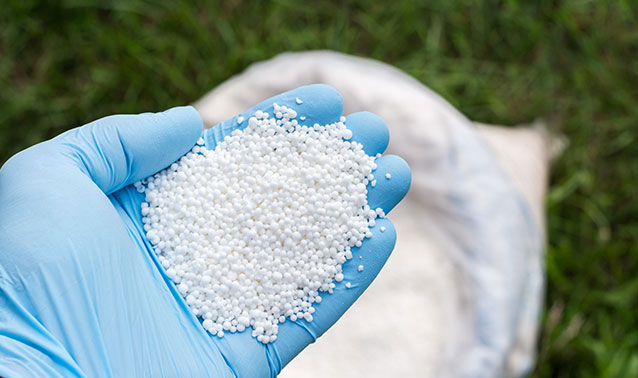The textile industry, while a vital source of clothing and other necessities, faces a growing challenge – its environmental impact. Conventional polyester, a dominant material, is derived from fossil fuels and contributes significantly to plastic pollution. Polyhydroxyalkanoates (PHAs), a class of bio-based and biodegradable polymers, offer a promising solution for a more sustainable textile future.
The Environmental Woes of Polyester
Polyester is a versatile and durable synthetic fiber widely used in clothing, footwear, and other textiles. However, its environmental footprint is concerning:
- Fossil Fuel Dependence: Polyester is derived from petroleum, a non-renewable resource.
- Microplastics: Synthetic clothing sheds microplastics during washing, polluting waterways and harming ecosystems.
- Landfill Accumulation: Discarded polyester garments take centuries to decompose in landfills.
PHAs: Nature’s Biodegradable Plastic
PHAs are a class of natural polyesters produced by a variety of bacteria. These microorganisms store PHAs as intracellular carbon and energy reserves.
Key Advantages of PHAs for Textiles:
- Biodegradability: PHAs decompose completely under appropriate conditions (industrial composting facilities or specific environments).
- Renewable Resources: PHAs are produced by fermenting sugars derived from plant sources like corn or sugarcane, making them renewable.
- Versatility: Different types of PHAs offer a range of properties, allowing for customization for specific textile applications.
Comparison of Properties between Polyester & PHAs
| Feature | Polyester | PHAs |
| Source | Fossil fuels | Renewable resources (bacteria) |
| Biodegradability | No | Yes |
| Microplastics | Significant shedding | Minimal shedding |
| Recyclability | Limited | Potentially recyclable (research ongoing) |
| Strength & Durability | High | Can vary depending on PHA type |
| Water Resistance | High | Can vary depending on PHA type drive_spreadsheetExport to Sheets |
Addressing Challenges and Advancing PHA Adoption
While PHAs hold immense potential, challenges are hindering their widespread use:
- Production Cost: Currently, PHA production is expensive compared to polyester.
- Scalability: Scaling up fermentation processes for large-scale PHA production needs optimization.
- Material Properties: Tailoring specific properties like strength and water resistance for different textile applications needs further research.
Despite these challenges, significant efforts are underway to overcome them:
- Research: Scientists are exploring ways to optimize fermentation processes, utilize cheaper feedstocks, and improve PHA properties through genetic engineering of bacteria.
- Industry Collaboration: Brands and manufacturers are collaborating with researchers to develop cost-effective PHA production methods and explore their integration into textile manufacturing processes.
The Future of PHAs in Textiles
The textile industry is gradually shifting towards more sustainable practices. PHAs offer a significant step forward, with the potential to replace a significant portion of polyester usage.
Here’s a glimpse into the future possibilities:
- Cost Reduction: As research advances and production scales up, PHA prices are expected to decrease, making them more commercially viable.
- Improved Properties: Through targeted research, PHAs can be tailored to meet the specific needs of various textile applications.
- Circular Economy: Developing efficient PHA recycling methods can further reduce environmental impact and create a circular economy for textiles.
Pioneering Brands: Embracing PHAs for a Sustainable Future
Several forward-thinking brands are actively exploring PHAs for their textile lines, demonstrating a shift towards eco-conscious practices. Here are a few examples:
- Patagonia: The renowned outdoor apparel brand has partnered with innovators like Genomatica to develop PHA-based materials for their products.
- Marmot: This outdoor gear manufacturer has incorporated PHA insulation into some of their jackets, showcasing the potential of PHAs for warmth retention.
- Adidas: The sportswear giant has collaborated with companies like BASF to explore the use of PHAs in their footwear, aiming to reduce their dependence on fossil fuels.
Ethical Considerations: Balancing Sustainability and Responsibility
While PHAs offer a promising solution, large-scale production requires careful consideration of its ethical implications. Here are some key areas to consider:
- Land-Use Changes: Conventional feedstocks for PHA production, such as corn or sugarcane, require significant land use. This could potentially lead to deforestation or competition with food production.
- Sustainable Feedstocks: Research into utilizing alternative feedstocks like waste materials or non-food crops can minimize land-use impact.
- Biodiversity: Large-scale cultivation of feedstocks can disrupt ecosystems and biodiversity. Sustainable farming practices and diversified crops can mitigate this risk.
Consumer Awareness: Educating for a Sustainable Future
Consumer awareness plays a crucial role in driving demand for sustainable textiles like PHAs. Here’s how education can promote wider adoption:
- Transparency & Labeling: Brands can transparently communicate their use of PHAs through labeling and educational campaigns.
- Consumer Education: Raising awareness about the environmental impact of conventional textiles and the benefits of PHAs can empower consumers to make informed choices.
- Collaboration: Collaboration between brands, retailers, and environmental organizations can create impactful educational initiatives.
The potential of PHAs to revolutionize the textile industry towards sustainability is undeniable. Research advancements, ethical considerations, and consumer education are all crucial elements in this journey. As we move forward, collaborative efforts between researchers, brands, and consumers can unlock the full potential of PHAs, paving the way for a cleaner and more sustainable future for textiles.
